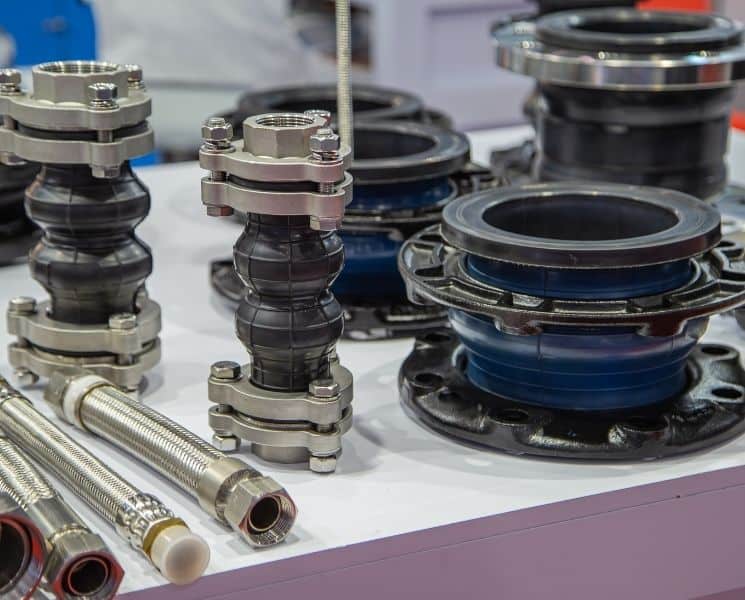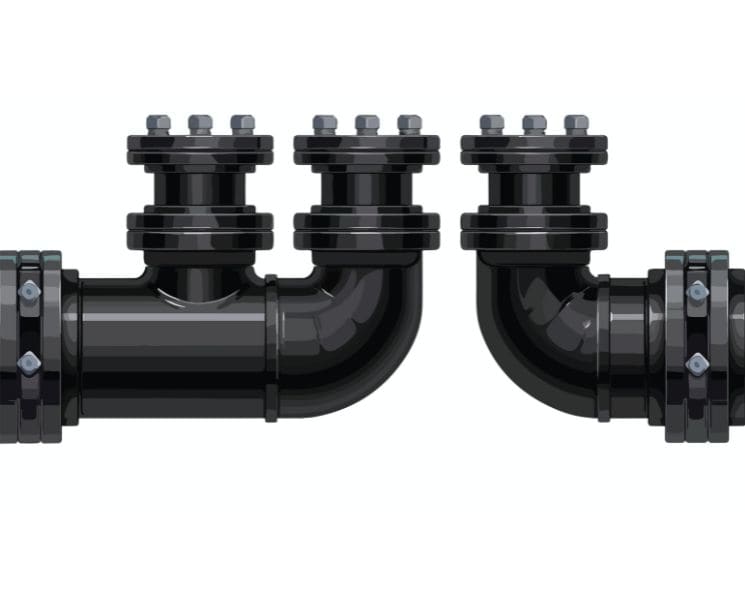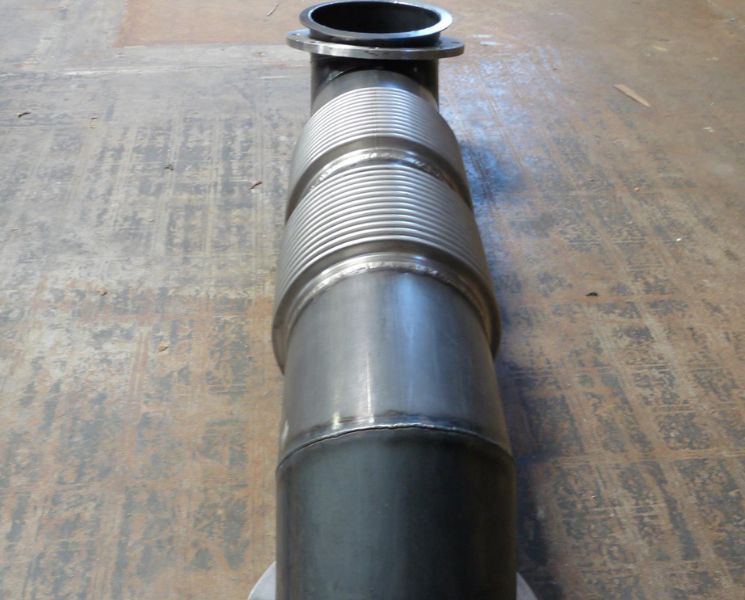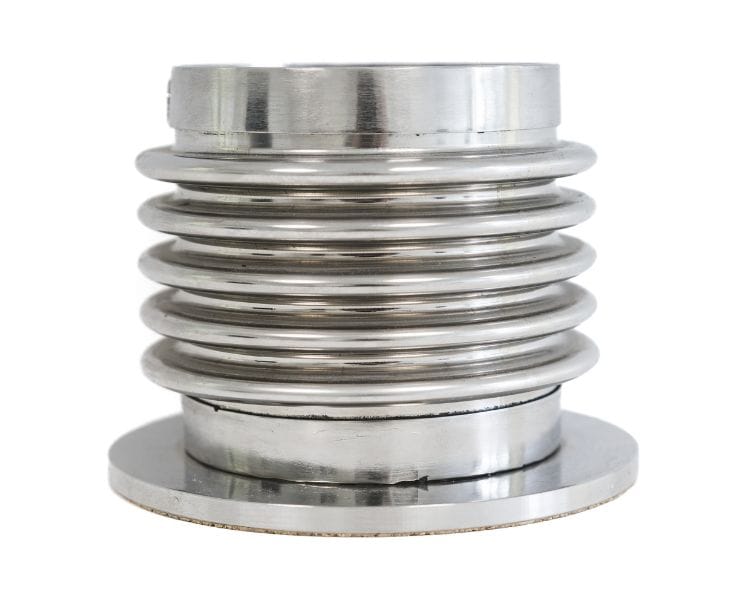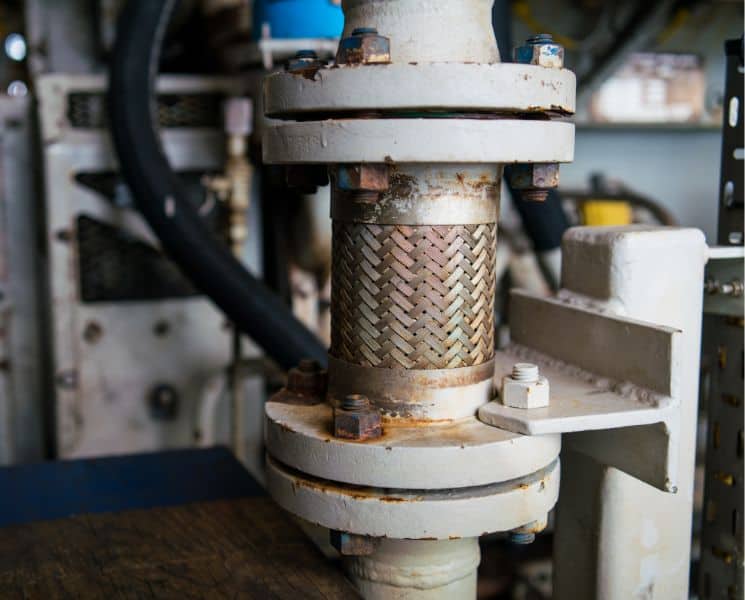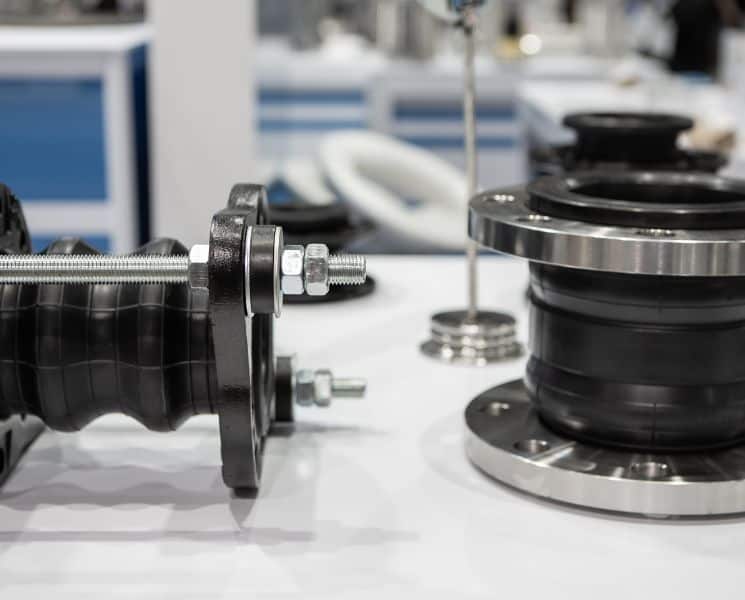Many types of expansion devices are used in industrial applications. As piping systems heat and cool, they experience changes in length caused by thermal expansion and contraction. This thermal expansion depends on the length of the piping run, the temperature differential, and the alloy of the pipe. Because this expansion and contraction can apply considerable stresses to the piping system, various methods have been utilized to compensate for these thermal movements. Let’s explore the most common types of expansion joints required in piping systems.
Pipe Expansion Loops
One of the most common types of expansion devices is a pipe expansion loop. Sections of pipe are installed that run perpendicular to the piping system. The resulting pipe expansion loop accommodates thermal movements. Pipe expansion loops must be carefully installed so the pipe, elbows, and welded joints can withstand the pressures exerted on them. While pipe expansion loops do not require maintenance, they take up a lot of space in the piping layout.
Slip-Type Joints
Slip-type joints are installed in-line with the piping system and compress as the pipe expands into them. This expansion is accommodated by a sleeve that slips into an outer shell. To prevent leakage through the slip joint, sealing materials are packed around the sleeve inside the body. Slip joints are available in many different styles and configurations. However, they have several fundamental limitations. Slip joints can only accommodate axial movement (compression and elongation). Slip joints are limited in their ability to accommodate thermal stress, and the packing material must be maintained and replaced regularly to prevent leakage. Too often, this maintenance is ignored, resulting in lost revenue from leaking steam or other media.
Bellows Type Expansion Joints
The most configurable types of expansion joint pipe fittings are metal expansion joints. Convoluted to provide flexibility, they consist of one or more metal bellows. A metal bellows expansion joint combines many of the benefits found in pipe loops and slip joints while avoiding many of their shortcomings. Like pipe loops, properly designed expansion bellows can absorb thermal, mechanical, or seismic movement in any direction and require no maintenance. Non-metallic joints may cost less, but they have limited temperature resistance and limited pressure absorbing capabilities. If the expansion joint is installed outdoors, metal expansion joints offer better resistance to sunlight, ozone, temperature extremes, and corrosive atmospheres than non-metal expansion joints.
Among our expansive selection of bellows expansion joint bellows include:
- Single Expansion Joints
- In-line Pressure Balanced Expansion Joints
- Externally Pressurized Expansion Joints
- Elbow Pressure Balanced Expansion Joints
- Universal Expansion Joints
- Tied Universal Expansion Joints
- Dual Expansion Joints
- Tie Rod Bellows Pump Connectors
- Victaulic Groove Expansion Joints
- Hinged Expansion Joints
- Gimbal Expansion Joints
- Blower and Fan Expansion Joints
- Metal Duct Expansion Joints
- Rectangular Metal Expansion Joints
We hope this guide on types of expansion joints required in piping systems has helped you choose the right expansion system for you. As you can see, there are various types of expansion devices used to accommodate expansion and contraction in an adequately designed pipe system. Triad Bellows offers the best metal expansion bellows. Our team has been developing and manufacturing exhaust bellows and pipe expansion joints for engine exhaust systems for over 35 years. We are looking forward to working with you.

